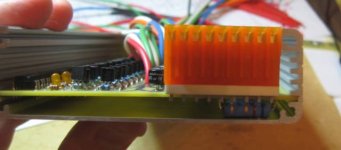GGoodrum
1 MW
auraslip said:There is also now an "Alarm" output that can drive a buzzer, or a 12V relay, for instance, instead of cutting the throttle signal. This sort of LVC method, either the trhottle or the alarm signal, means there's no limit on discharge current for this BMS design. The discharge wires do not need to connect to the BMS at all.
Does this mean there is a 12v output to power the coil of the relay?
Yes, that is right. I don't remember the max current draw, but Richard can pop in and provide that.



